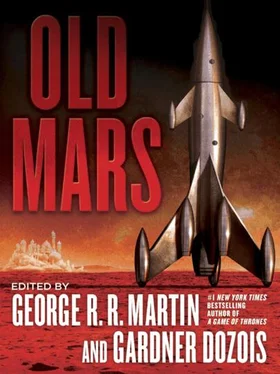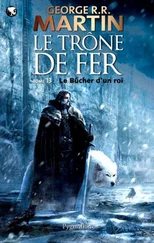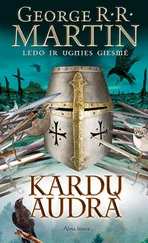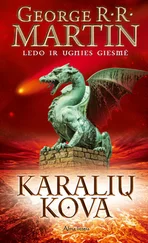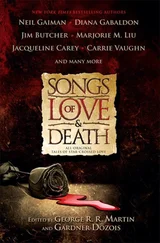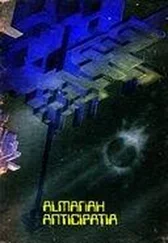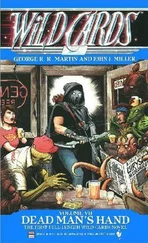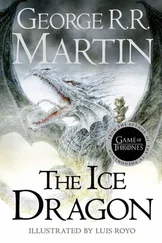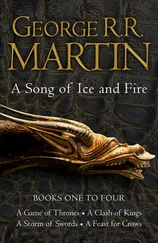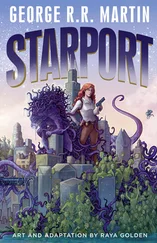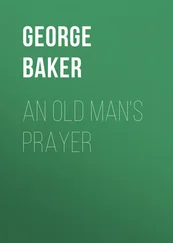“Of course,” Dair said sourly, a couple of hours later, “failure’s not good for the reputation.”
“True. But at least we don’t have to go all the way back to Cadrada empty-handed. Although I don’t think that the north is a very healthy place to be anymore.” I was remembering the priestess’s warriors. Dair turned the glass in his fingers.
“I was thinking of Yllt. Lovely at this time of year. And they do make a nice wine.”
I smiled.
“Do you want a companion for the ride?”
“Not fussy, are you? Although I’m reminded that you no longer have a mount.”
And so the next morning I once more rode out of Scarlight, on Dair’s black tope, with the Jharain wind at my back, money in my pocket, and the vision of a girl’s face before me, her eyes the color of forests.
Howard Waldrop is widely considered to be one of the best short-story writers in the business, having been called “the resident Weird Mind of our generation” and an author “who writes like [a] honkytonk angel.” His famous story “The Ugly Chickens” won both the Nebula and the World Fantasy Awards in 1981. His work has been gathered in the collections: Howard Who?, All About Strange Monsters of the Recent Past: Neat Stories by Howard Waldrop, Night of the Cooters: More Neat Stories by Howard Waldrop, Going Home Again , the print version of his collection Dream Factories and Radio Pictures (formerly available only in downloadable form online), and a collection of his stories written in collaboration with various other authors, Custer’s Last Jump and Other Collaborations . Waldrop is also the author of the novel The Texas-Israeli War: 1999 , in collaboration with Jake Saunders, and of two solo novels, Them Bones and A Dozen Tough Jobs , as well as the chapbook A Better World’s in Birth! He is at work on a new novel, tentatively titled The Moone World . His most recent book is a big retrospective collection, Things Will Never Be the Same: Selected Short Fiction 1980–2005 . Having lived in Washington State for a number of years, Waldrop recently moved back to his former hometown of Austin, Texas, something that caused celebrations and loud hurrahs to rise up from the population.
Historical re-creations are popular on Earth, with thousands reenacting Civil War battles and scenes from other conflicts, but here Waldrop shows us a historical re-creation taking place on Mars, one that takes us on a voyage on a historically accurate reconstruction of a slimshang out across the Martian deserts to the source of all life itself.
The Dead Sea-Bottom Scrolls (A Re-creation of Oud’s Journey by Slimshang from Tharsis to Solis Lacus, by George Weeton, Fourth Mars Settlement Wave, 1981)
HOWARD WALDROP
SO I AM STANDING HERE ON A COLD MORNING, BESIDE THE best approximation of a slimshang of which Terran science is capable—polycarbonates and (Earth) man-made fabrics instead of the original hardened plant fibers and outer coverings of animals long extinct. It looks fast, probably faster than any native-made slimshang , but it will have to do.
One thing it’s missing is the series of gears, cogs, plates, and knobs with which a sort of music was made as it rolled. Martians spoke of “coming at full melody”—since the reproduction was mechanical, like a music box, the faster the slimshang went, the louder and more rackety the tune.
Instead, I have a tape deck with me, on which I have chosen to put an endless loop of the early-1960s tune “The Martian Hop.”
It’s appropriate and fitting.
What I am doing is to set out in the re-created slimshang to follow the route (if not the incidents and feelings) of Oud’s famous journey from Tharsis to Solis Lacus.
It’s the most famous Martian travelogue we have (for many and varying reasons).
Oud was the first thinking commentator on the changes Mars was undergoing in his (long) lifetime. Others had noted the transformation, but not the underlying processes. And Oud’s personal experiences added much to the classic stature of his tale.
So on this cold morning at Settlement #6 (vying, like many, for the AAS to officially rechristen it Lowell City), I shook hands with the three people who had come outside the temporary bubble dome to see me off.
We stood exchanging small talk for a few minutes, then Oud’s words came to me: “A Being has to do what a Being has to do.”
So I climbed into my high-tech slimshang , up-sailed, waved to the others (who were already heading back for the haven of air they could breathe), and set my course west, playing “The Martian Hop” as I jumped some scattered pinkish dunes.
Think of Oud as a Martian Windwagon Smith.
He set out from Tharsis (on the old volcanic shield) toward Solis Lacus (the site of some till-then-inexact place of cultural revelation), and recorded what would have been to other Martians a pleasant (as we understand it) few-days jaunt in the equivalent of a hot-rod windwagon (which most slimshangs were, and Oud’s definitely was; I’m assuming that his approached mine in elegance, if not materials).
That Oud started in winter was unusual. The weather was colder and the winds less predictable then, given to frequent planet-girdling dust storms. Winter and spring trips were not unknown, but most were taken in mid–Martian summer, when temperatures sometimes rose to the low forties Fahrenheit.
This tradition was left over from an earlier Mars (along with cultural patterns and the development of the slimshang ). No one thought to do it any other way.
The Martians were nothing if not a tradition-bound species. But there’s a lot to be said for customs that get you through 10 or 15 million years (the jury is still out).
I’m sure, in the future, someone will read my retracing of Oud’s journey and point out the know-it-allness of earlier humans jumping in with inexact knowledge and pronouncements of age off by factors of three or four, and will comment on them in footnotes. 1
From Oud: “Weather fine (for the time of year). Not much debris, sands fairly smooth and sessile. Skirted two or three eroded gullies. Smooth running till dark. Saw one other being all day, walking, near an aboveground single habitation. Pulled slimshang over at dark and buttoned up for the night. Very comfortable.” 2
He should have seen the place today. I had to dodge erratic rocks the size of railroad freight cars, and the two or three eroded gulleys now look like the Channeled Scablands of the northwest United States.
Oud lived, we think, at the start of the Great Bombardment (see later), before the largest of the geologic upheavals, the rise of the shield volcanoes and the great asteroid impacts that released untold amounts of suddenly boiling permafrost and loosed water vapor and pyroclastic flows that changed the even-then-ever-changing face of Mars.
After the now-eroded features of my first day’s route, I was slowing myself where necessary to cover exactly the same distances as Oud: Only once in the whole trip had Oud’s slimshang , which must really have been something, made better time than mine through (in his day) worse terrain. Give or take a boulder the size of an Airstream trailer, the ground was a gradual slope off the Tharsis plateau.
I settled in for the night, calling in my position to Mars Central, watched the sunset (which comes fast in these parts), and saw one of the hurtling moons of Mars hurtle by. Then, like Oud, millennia before, I went to sleep.
Читать дальше
